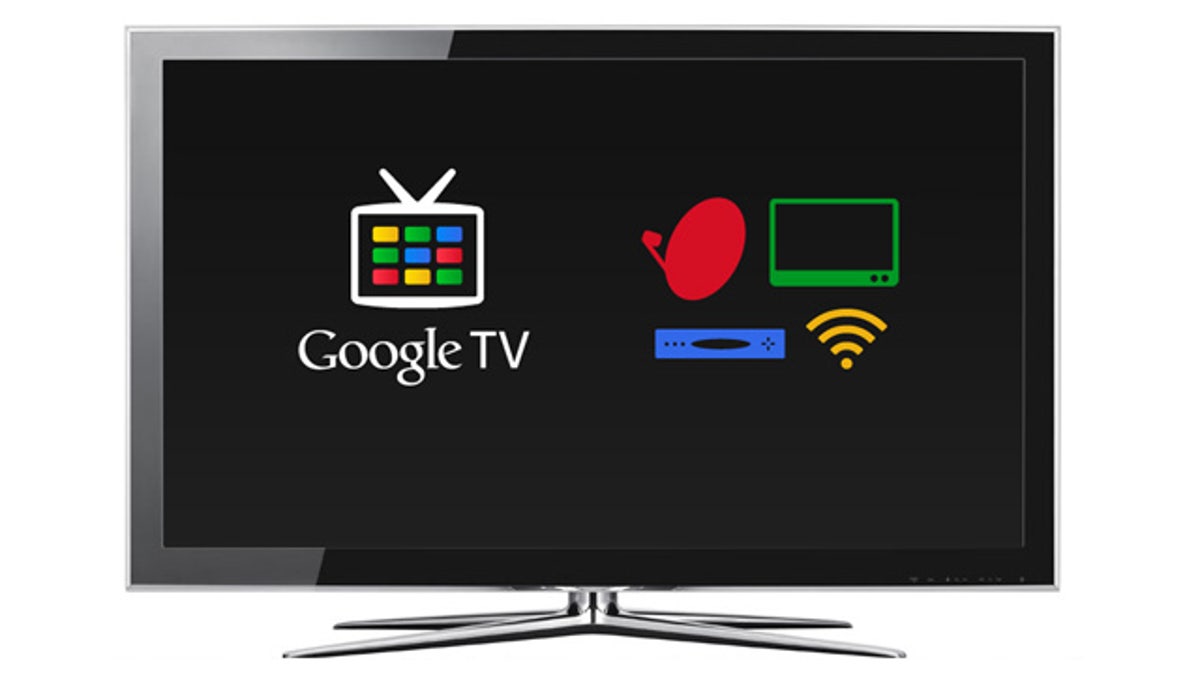
Google hopes to invade the living room with Google TV.
First it conquered the Web, then smartphones. Now Google's headed to your television.
The basic idea is simple: People watch a whole lot of video on the Internet -- YouTube shorts, clips from last night's comedy shows, news segments -- plus clips of videos on PCs around the house, and shows and movies available for purchase online, and all those programs on the DVR. Wouldn't it be a couch potato's dream to have all of that all available on the living room TV?
Better still, wouldn't it be wonderful to be able to quickly find something to watch -- no matter what the source of the show -- with an easy search? That's the premise of Google TV.
Today, Sony debuts the first line of HDTVs with Google TV built in. A 46-inch model is expected to cost roughly $1,400. Other electronics companies have also hinted they'll put Google TV into their Blu-ray players and televisions. Meanwhile, last week, Logitech demonstrated the first set-top box with Google TV. Called the Revue, the $300 box comes with a wireless keyboard and built in Wi-Fi to connect to a home's Internet connection. In a typical setup, the Logitech Revue sits between the cable box and the TV. It grabs information from the cable box as well as from online sources and puts it all in one place.
But is this something viewers really want?
Searching for something to watch on TV has already become onerous, even without adding Internet content. By the time you scan the hundreds of listings in the cable company's electronic program guide the show may be halfway through. On the other hand, the habitual complaint of every viewer -- there's nothing to watch on TV -- still applies more often than not. So adding more choice from online sources could make a difference.
Trying out an early version of Logitech's Revue, for example, illustrated how Google TV might help. A search of the popular British car show Top Gear brought up not only listings for forthcoming shows on the satellite feed, but also some online videos. From the show's Web site, I watched a particularly hilarious outtake of actor Jeff Goldblum taking the program's infamous race track challenge (Jeff didn't do so well). The video quality was blurry compared with the high-definition broadcast you'd see on the BBC, but it was watchable in small doses.
On the other hand, some of the top results in other searches were for trailers and other video detritus on YouTube. Not exactly helping to clear up the clutter of the Internet. And the on-screen presentation hews more toward what you'd see on a computer screen than something designed to be viewed from 10 feet away on a couch. There are choices along the left-hand side, including apps, for example, and the text listings and results can quickly clutter the main screen. One can imagine it getting even more cluttered when more apps become available for Google TV, just as the array of icons on Android phones can overwhelm.
There also some limitations with the first release of Google TV. For example, it cannot include the contents of your DVR (except for those of Dish Network subscribers) in video searches. It also does not include Netflix as one of the video sources in searches, although Logitech expects to offer this feature in a future software upgrade.
However, don't expect the DVR functionality to come along soon. Cable companies are loath to give Google access to any of their equipment and generally see the software as potentially stealing viewers away from their channels -- as do broadcasters who are worried sick about declining ad revenue because of increased Internet use.
What about the $99 Apple TV box? At the moment Apple TV is essentially an online video rental store. The company has clearly throttled back its ambitions for the product and looks to be positioning it as an iPad connector for TVs. Google also has its sights set on the smartphone and tablet market.
The launch of Google TV later this month will include, for example, a free remote-control app for both iPhone and Android smartphones. In one demonstration, a Logitech employee started watching a YouTube video on a phone, then switched it to the big-screen TV to continue watching the clip. There will be several Google Android-based tablets in stores before Christmas, so expect to see similar abilities on those devices soon.
As Google TV makes abundantly obvious, the technology to bypass cable companies -- or at least wrest away a lot of the control they have over viewers -- is available now. For example, owners can add a hard drive to the box via a USB plug and could eventually use an Internet program listing, such as TV Guide, to select and record shows. But this is not about so-called a la carte programming. The Revue does not have a TV tuner, and the bundling of channels and monthly subscription fees from cable and satellite companies are likely to stay for years to come.
Clearly, Google is betting that this won't last forever, however. If people start subscribing to separate feeds, such as the MLB games available on Internet streams, and television programs fed through Web sites like Hulu, then it will become even more difficult to find something to watch.
And Google? Well, just like it does with the Web, the company only wants to be there to help.
FoxNews.com's SciTech section is on Twitter! Follow us @fxnscitech.
